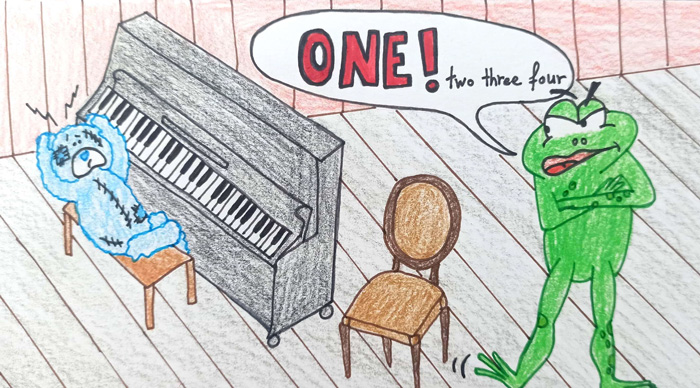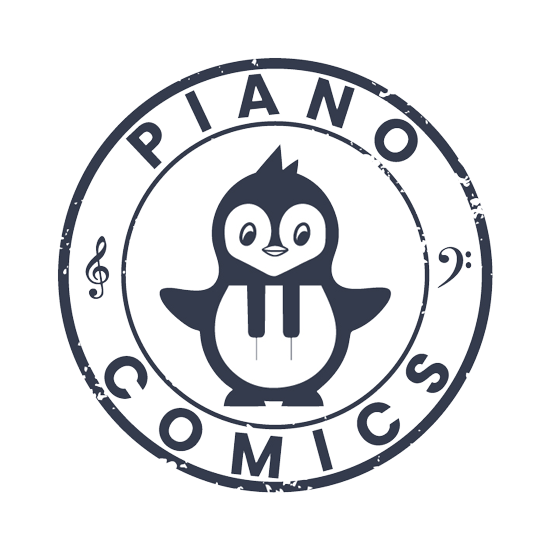WhatWhat isis PianoPiano Comics?Comics?
Piano Comics was created as an idea to engage my beginner students to learn piano while having fun and for my existing students who had started to lose interest in the traditional curriculum.
The Piano Comics is a set of musical tales with illustrations and lyrics which rhyme with the melody. The illustrations are in caricature style telling the story of the adventures of 5 friends-animals.
A Comic consists of 1-10 pages, depending on the story. Each page has a piano score, lyrics rhymed with the melody and comic illustrations of 1-6 scenes.
In practice, Piano Comics are designed to be used/played by the students from Late Beginners to Elementary, aged 6-12.
On who exactly Piano Comics is for, how to use it, what its benefits are and more check out our FAQ section.
Why Piano Comics and how do they help students?
The most important reason that led me to create an alternative piano teaching method was that I wanted to show to my students how music exists in our everyday life, through natural phenomena, the rhythm and articulation of our speech and our body movements. What followed was that even more advanced students, whose interest to play and practice piano had started to fade, showed interest in Piano Comics as an alternative, fun way to re-engage with the instrument.


Piano Comics helps students in various levels
Firstly, the rhymed lyrics ingrain into the melody and rhythm of the brain which later brings that knowledge to the fingers. Students learn to play on the piano songs they are familiar with much faster than unknown songs or pieces.
The context of each story and specifically the way a story is told, sung and recited comprises a wide range of intonations, different feelings portrayed in the voice, noise and other sounds, body movement. All these elements teach basic music principles, such as dynamics and their changes, tempos and their changes, and articulation. For example, the process of getting angry corresponds to accelerando and crescendo, while the act of jumping corresponds to staccato.
More learning instruments are provided such as the visual stimuli that brain often needs in order to absorb new information. The comics serve as a device to ignite the imagination and provide a new, often more effective language to teach rhythm, tempos, and dynamics, e.g. body movement, change of emotions, and facial expressions.
Most importantly, the students develop their listening skills and improve their ear training by having to literally accompany themselves on the piano whether they sing the lyrics out loud or in their head.



